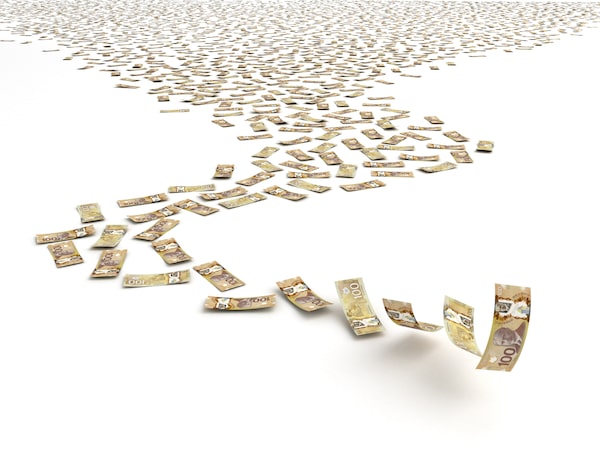
Prices are still rising much faster than rates on savings instruments, meaning negative returns once inflation is factored in.selensergen/iStockPhoto / Getty Images
After a decade and a half of punishingly low interest rates, the war on savers is over – sort of, depending how you look at it.
Decent returns on savings in Canada have made a surprising comeback, the product of central bankers’ desperate campaign to rein in inflation.
A torrent of policy rate hikes have pushed the rates on low-risk fixed income instruments, such as guaranteed investment certificates, as high as 5 per cent on a five-year term.
For many Canadians more inclined to save than to borrow, retirement planning now looks very different than it did just a year ago. Cash flow requirements can more or less be met with savings and conservative investments.
“We are encouraging clients to buy five- to 10-year maturity GICs and bonds for the first time in many years,” said Kurt Rosentreter, portfolio manager and senior financial adviser with Manulife Securities.
“They can almost lock in retirement funding.”
But there is a hitch, and it’s a big one: inflation, which is proving to be the great spoiler of this particular economic moment.
Prices are still rising much faster than rates on savings instruments, meaning negative returns once inflation is factored in. For the past three monthly inflation readings in Canada, the Consumer Price Index has gained between 7 per cent and 8 per cent, year over year.
Money committed to long-term savings now might not have gained much purchasing power five or 10 years down the road. Savers will need to put a little faith in central banks getting control of rising living costs.
“Putting that money away for five years is a bet,” said Jackie Porter, a Toronto-based certified financial planner. “You’re locking in a negative real rate right now, but if inflation returns to the trend it’s been on for the last 30 years, we should see that balancing out at some point.”
Many Canadians appear willing to take that bet. Alternative lenders, which typically offer much more generous rates on savings than the big banks, are doing a booming trade in GICs, with many of them scrambling to keep up with demand.
And last month, Royal Bank reported that $10-billion flowed into its GIC products in its fiscal third quarter, including a “good part” of the $4-billion investors pulled from the bank’s equity and fixed income funds.
It’s one sign Canadian investors’ appetites are shifting away from stocks and toward savings, which flips the script that steered financial markets for well over a decade.
The global financial crisis saw central bankers shift toward an ultralow interest rate regime, which has more or less been in place ever since.
In trying to stimulate the economy, stabilize the financial system, encourage borrowing and support the stock market, policy makers effectively penalized savers. They were forced to choose between earning next to nothing in savings, or taking on more risk in the stock market.
“We told retirees to get part-time jobs, don’t retire, spend less or sell their big house to create more cash flow,” Mr. Rosentreter said. “We told them to reduce inheritance expectations for kids and let them spend some of their savings base, too. All because bonds and GICs paid so little for so long.”
While nobody is getting rich off of today’s GICs, they at least offer the prospect of a positive real return for the first time since 2007, David Baskin, president of Baskin Wealth Management, wrote in a newsletter to investors. That’s assuming, again, that inflation reverts to its historical range.
“If we are right about inflation, that provides a real return of about 2 per cent to 3 per cent. Not too bad for a very low risk investment,” Mr. Baskin wrote. “The war on savers is finally over.”